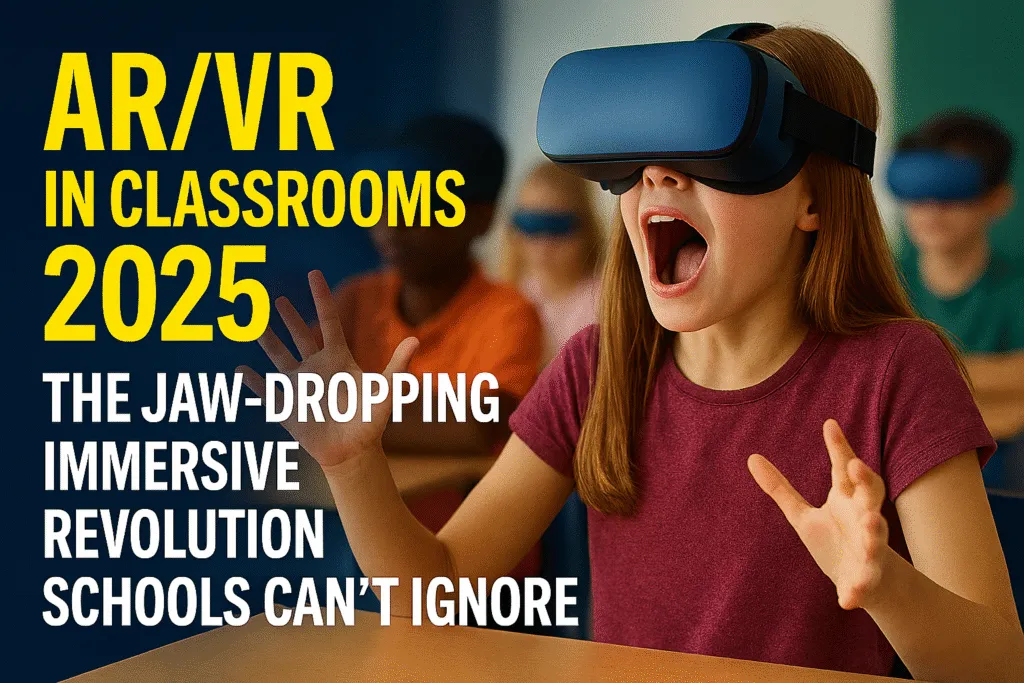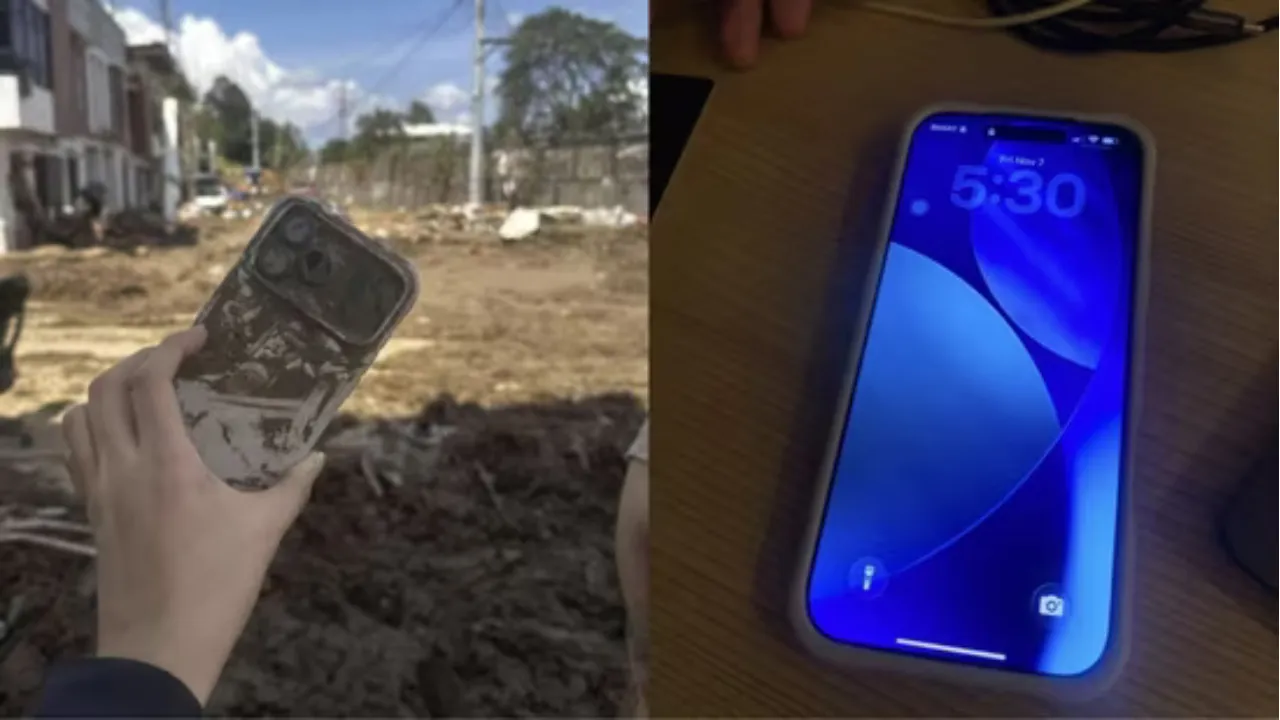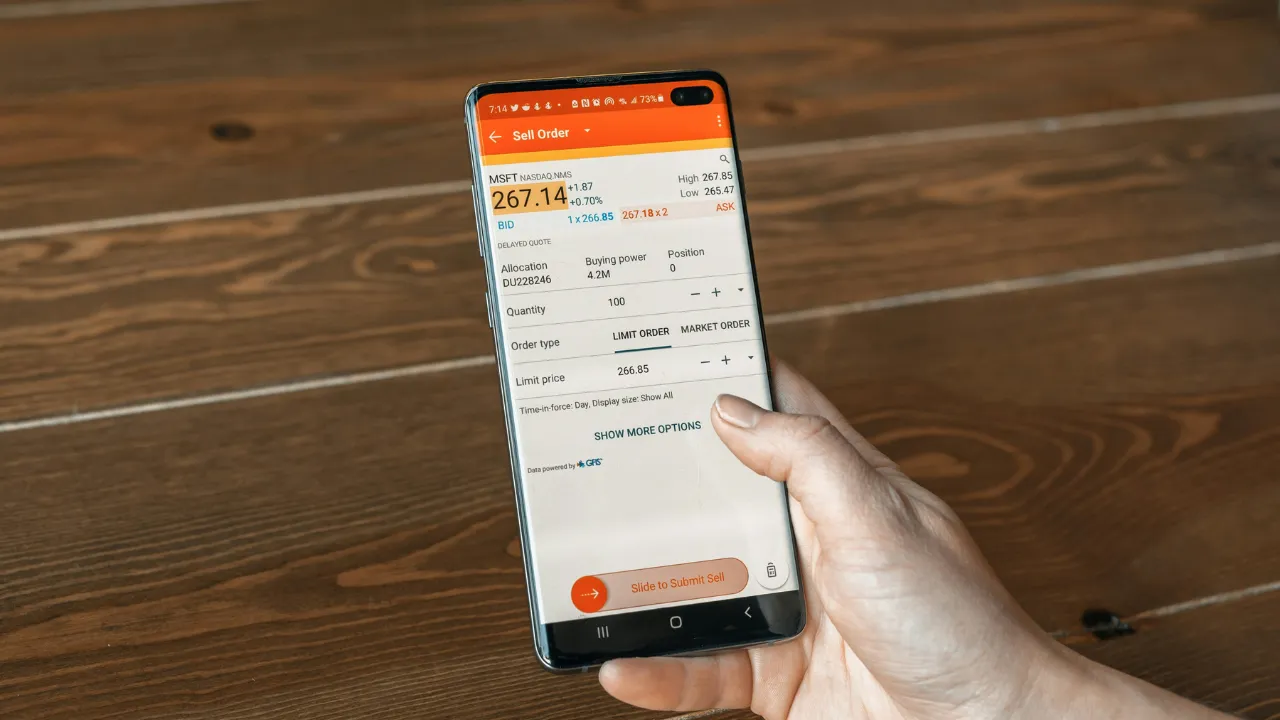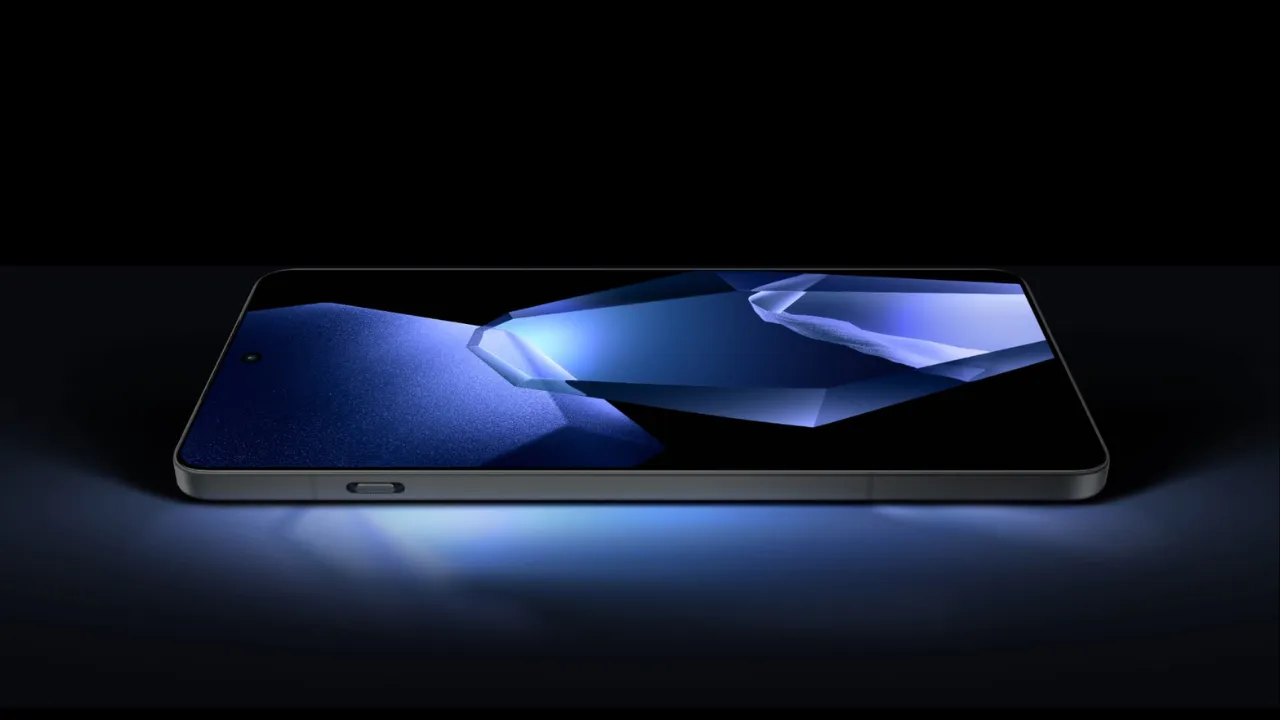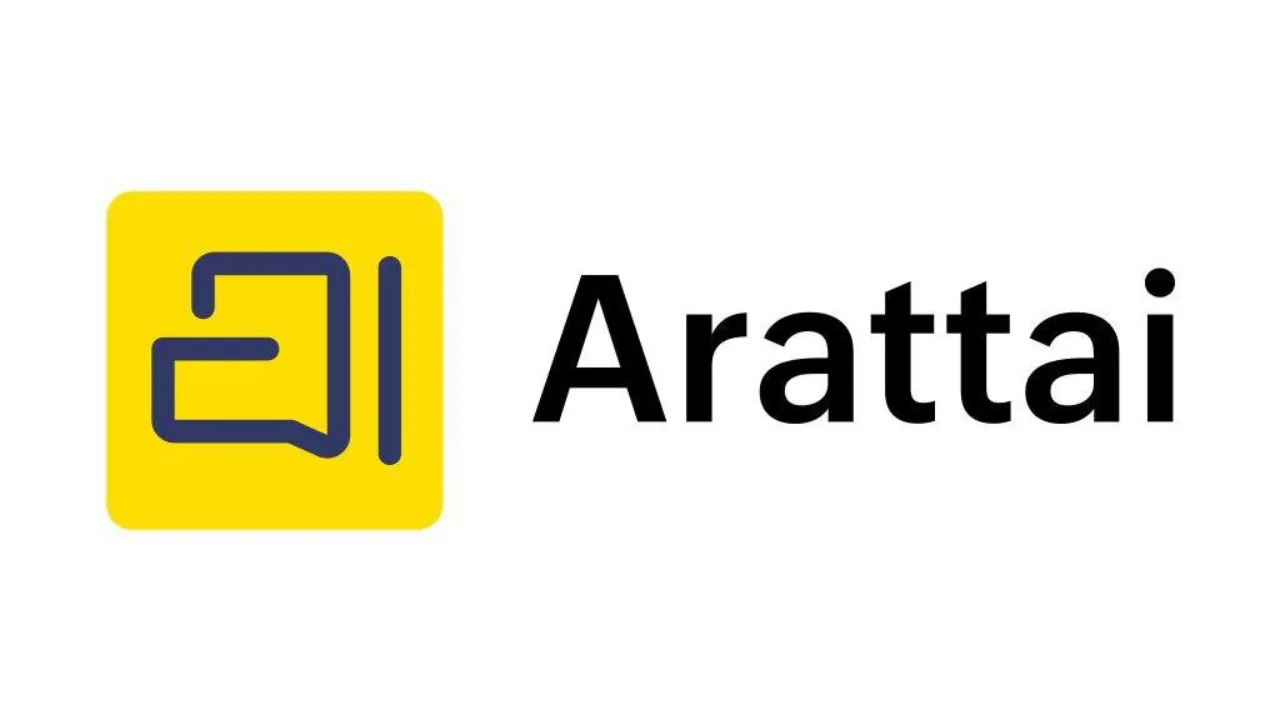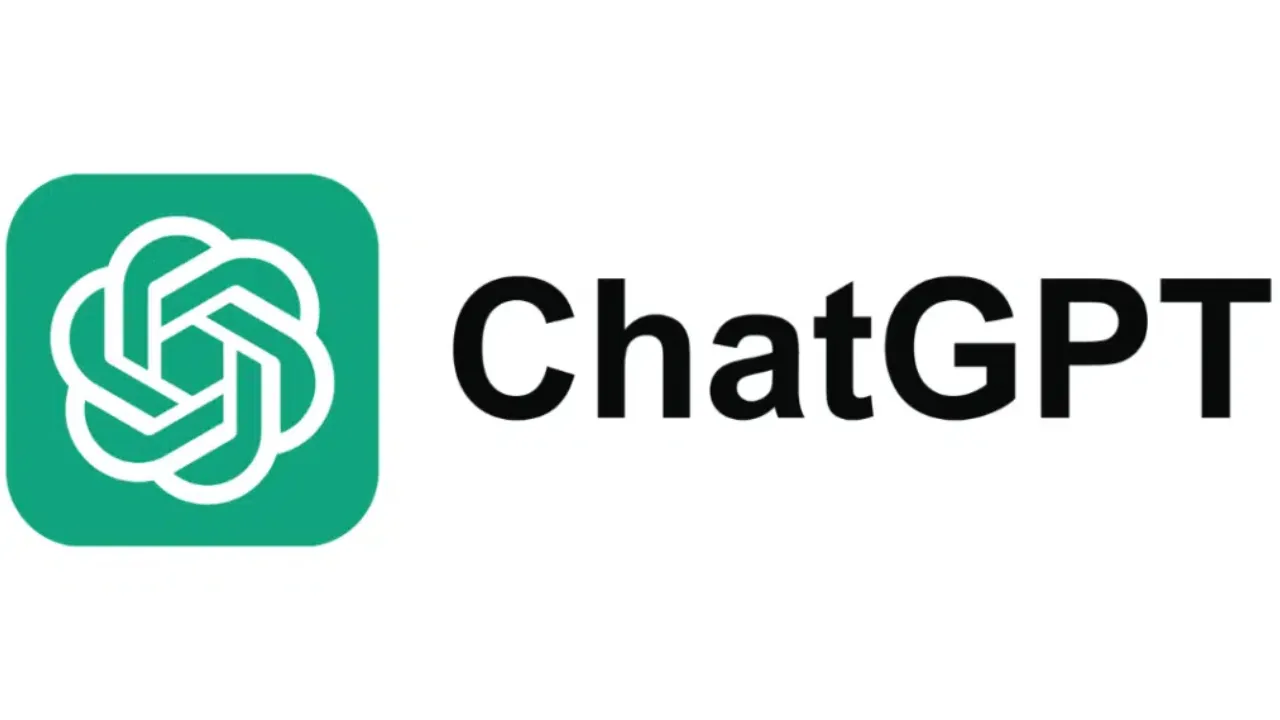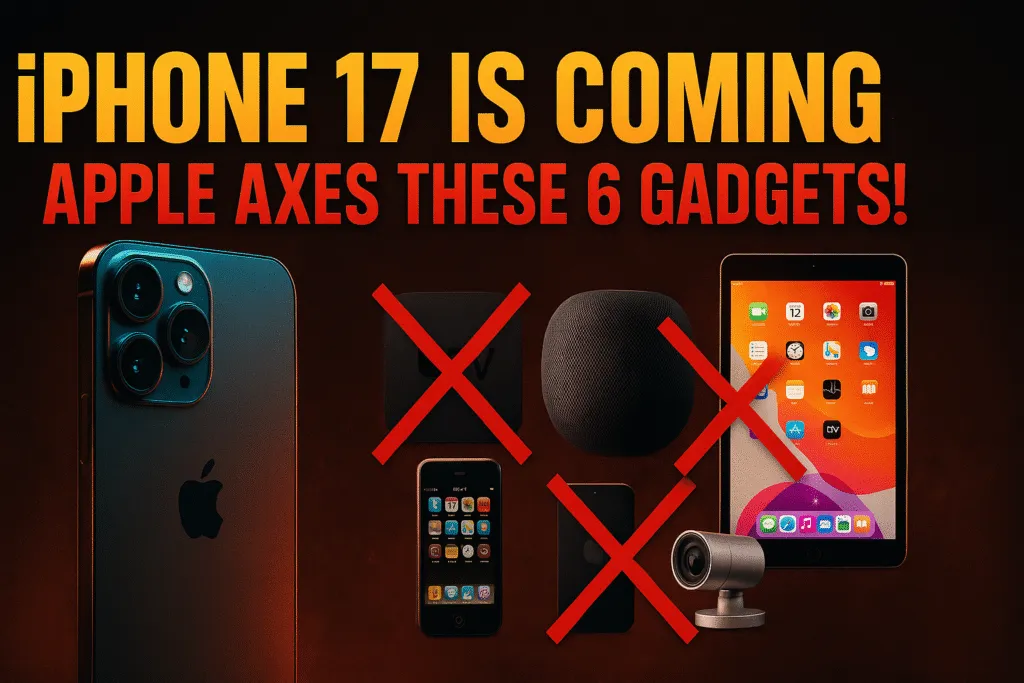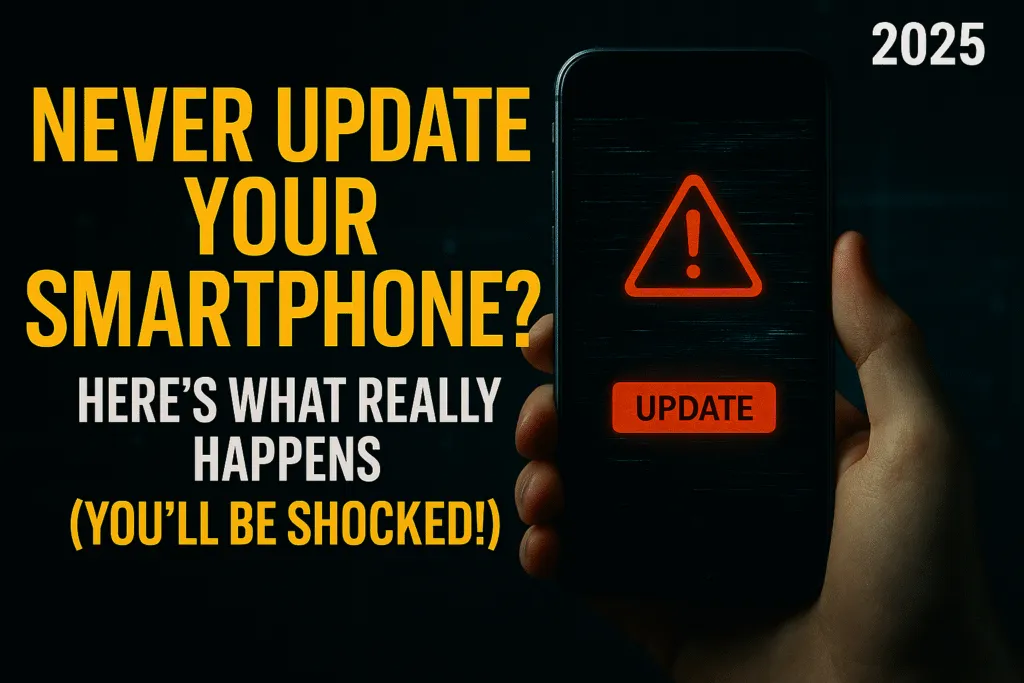Introduction: The New Age of Learning with AR and VR
AR/VR in classrooms is rapidly transforming the way students learn and engage with educational content. As technology continues to evolve, traditional teaching methods are making way for more immersive and interactive experiences. Augmented Reality (AR) and Virtual Reality (VR) bring lessons to life by allowing students to explore complex concepts through visual and hands-on experiences, making learning not just informative but also exciting.
In 2025, AR/VR in classrooms is no longer a futuristic idea but a practical tool being adopted by many schools worldwide. These technologies enable students to dive into virtual environments where they can manipulate objects, conduct experiments, or even travel through historical events and distant planets. This immersive approach caters to various learning styles, helping students grasp difficult subjects more effectively and retain information longer.
Moreover, AR/VR in classrooms bridges gaps created by limited resources, giving students access to experiences that would otherwise be impossible. For example, a biology class can use VR to explore the human body in 3D, while geography lessons can come alive through AR maps that highlight different terrains and ecosystems. Such innovative use of technology promotes curiosity and creativity, encouraging students to explore beyond textbooks.
Teachers also benefit from AR/VR as these tools offer new ways to present material and assess understanding through interactive simulations and real-time feedback. With AR/VR in classrooms, education becomes more personalized, engaging, and inclusive, addressing diverse needs and abilities.
As schools increasingly recognize the potential of AR/VR, this immersive revolution is set to redefine education. The focus is shifting from rote memorization to experiential learning, making classrooms more dynamic and preparing students for a technology-driven future. Embracing AR/VR in classrooms is essential for schools that want to stay ahead and provide students with the best possible learning environment.
What Are AR and VR? A Quick Overview
Augmented Reality (AR) and Virtual Reality (VR) are two powerful technologies reshaping the educational landscape. While both offer immersive experiences, they function in distinct ways that make them uniquely valuable for classrooms.
AR, or Augmented Reality, overlays digital elements like images, sounds, or information onto the real world through devices such as smartphones, tablets, or AR glasses. This means students can see and interact with virtual objects while still being aware of their physical surroundings. For example, AR apps can display 3D models of the solar system right on a classroom desk, helping students visualize complex ideas more clearly.
On the other hand, Virtual Reality completely immerses users in a digitally created environment. By wearing VR headsets, students can enter fully simulated worlds, such as ancient historical sites, deep ocean explorations, or even inside the human body. This total immersion allows learners to experience scenarios they couldn’t access in a traditional classroom setting, fostering deeper understanding and engagement.
Both AR and VR bring unique advantages to education. AR enhances the existing environment with interactive content, making lessons more dynamic without disconnecting from reality. VR offers transformative experiences by transporting students to entirely new places, encouraging exploration and critical thinking.
In 2025, the use of AR/VR in classrooms is becoming more mainstream as schools invest in affordable devices and educational software. These technologies support varied learning styles by combining visual, auditory, and kinesthetic elements, helping students absorb information more effectively.
Understanding what AR and VR are is the first step toward embracing their potential in education. Together, they are not just tech buzzwords but essential tools shaping the future of immersive and interactive learning.
Why AR/VR in Classrooms? Benefits for Students and Teachers
The adoption of AR/VR in classrooms is revolutionizing education by offering significant benefits to both students and teachers. These immersive technologies go beyond traditional teaching methods, making learning more engaging, interactive, and effective.
For students, AR/VR creates hands-on learning experiences that make abstract or complex concepts easier to understand. Instead of just reading about historical events or scientific processes, students can visualize and interact with 3D models, virtual labs, and real-world simulations. This active involvement increases retention and sparks curiosity, helping learners stay motivated and focused. Additionally, AR/VR supports different learning styles by combining visual, auditory, and tactile elements, making education more inclusive and accessible.
Teachers also gain valuable advantages from integrating AR/VR in classrooms. These technologies provide innovative tools to explain difficult topics with clarity and creativity. Interactive simulations allow teachers to demonstrate experiments or scenarios safely and cost-effectively, without the limitations of physical resources. Moreover, AR/VR enables personalized learning by adapting content to individual student needs, allowing educators to monitor progress and provide timely feedback.
Beyond improving engagement and comprehension, AR/VR fosters collaboration and communication among students. Virtual group projects or shared AR experiences encourage teamwork and critical thinking skills, preparing learners for real-world challenges.
In 2025, the growing availability and affordability of AR/VR solutions make it easier for schools to implement these tools. The benefits for students and teachers are clear: enhanced understanding, increased motivation, and more dynamic classroom environments. By embracing AR/VR, schools can create a future-ready education system that empowers every learner and educator.
Current Trends of AR/VR in Education (2025 Update)
As of 2025, Augmented Reality (AR) and Virtual Reality (VR) have become integral components of modern education, ushering in a transformative era of immersive learning experiences. These technologies are reshaping classrooms worldwide, offering innovative ways to engage students and enhance educational outcomes.
- Accelerated Market Growth
The global AR/VR in education market is experiencing significant expansion. In recent years, the market has grown rapidly and is expected to continue this upward trend. This growth is driven by increasing demand for interactive and personalized learning experiences, as well as advancements in digital infrastructure. - Integration of AI and Cloud Technologies
The convergence of AR/VR with Artificial Intelligence (AI) and cloud computing is enhancing the scalability and accessibility of immersive learning platforms. AI-driven analytics allow for personalized learning paths, while cloud-based solutions enable seamless access to AR/VR content from various devices, facilitating remote and hybrid learning environments. - Regional Adoption Patterns
North America continues to lead in AR/VR adoption in education, with significant investments from both public and private sectors. However, the Asia Pacific region is experiencing rapid growth, driven by government initiatives and increasing demand for digital education solutions. - Enhanced Learning Experiences
Educators are leveraging AR/VR to create dynamic and engaging lessons. For instance, students can explore historical sites, conduct virtual science experiments, or visualize complex mathematical concepts, all within an immersive environment. This hands-on approach fosters deeper understanding and retention of knowledge. - Challenges and Considerations
Despite the promising advancements, the integration of AR/VR in education faces challenges such as high implementation costs, the need for teacher training, and potential issues related to screen time and accessibility. Addressing these concerns is crucial for the sustainable adoption of immersive technologies in educational settings.
In summary, AR/VR technologies are revolutionizing education by providing immersive and personalized learning experiences. As these technologies continue to evolve, their potential to transform education remains vast, promising a future where learning is more engaging, accessible, and effective.
How AR/VR Enhances Student Engagement and Retention
AR/VR in classrooms has a powerful impact on student engagement and knowledge retention, fundamentally changing how learners interact with educational content. Traditional teaching methods often struggle to keep students fully involved, but immersive technologies bring lessons to life, making learning more exciting and memorable.
By using AR and VR, students become active participants rather than passive listeners. These technologies offer hands-on experiences, allowing learners to explore concepts in 3D, manipulate virtual objects, and engage in simulated real-world scenarios. This active involvement stimulates curiosity and encourages deeper cognitive processing, which is key to better retention of information.
Visual and interactive elements in AR/VR cater to various learning styles, including visual, auditory, and kinesthetic learners. When students see, hear, and “touch” concepts, they create stronger neural connections, improving understanding and recall. For example, a VR biology lesson where students explore the human heart in a virtual environment can leave a longer-lasting impression than reading textbook diagrams.
Moreover, AR/VR reduces distractions by immersing students fully in the learning environment. This focused attention helps prevent information overload and enhances comprehension. It also increases motivation, as students find immersive lessons more enjoyable and relevant.
In addition, AR/VR can offer instant feedback and adaptive learning paths, enabling students to correct mistakes and reinforce knowledge in real time. This personalized approach helps maintain engagement and supports mastery of subjects.
Overall, AR/VR in classrooms transforms education into an interactive adventure, boosting student engagement and retention. As schools embrace these technologies, they equip learners with the skills and enthusiasm needed for success in an increasingly digital world.
Real-World Applications: Examples of AR/VR in Schools Today
AR/VR in classrooms is no longer just a concept — it’s actively being used in schools around the world to enhance learning and make education more interactive. These technologies bring a new dimension to teaching by allowing students to experience subjects firsthand, rather than simply reading or listening.
One popular application is in science education. For example, VR lets students explore the human body in 3D, walking through organs and systems to understand how they function. This immersive experience helps students grasp complex biology topics that are difficult to visualize from textbooks alone. Similarly, AR apps enable students to interact with 3D models of molecules or chemical reactions right on their desks, making abstract chemistry concepts tangible.
History classes have also embraced AR/VR. Students can take virtual field trips to ancient civilizations, famous landmarks, or battlefields without leaving the classroom. This immersive storytelling brings history to life, increasing engagement and making it easier for students to remember facts and events.
Geography lessons benefit from AR overlays that display real-time weather patterns, topography, or ecosystems on physical maps, helping students connect theory with the real world. VR also allows virtual expeditions to remote locations like rainforests, deserts, or the deep ocean, providing experiences that would be impossible otherwise.
Even in language learning, AR/VR tools create immersive environments where students can practice speaking and listening skills in realistic contexts, boosting confidence and fluency.
Beyond student learning, teachers use AR/VR for professional development and to design more effective lesson plans. Schools are also employing these technologies for special education, helping students with disabilities access tailored and engaging content.
In 2025, AR/VR in classrooms is becoming more affordable and widespread, offering a glimpse into the future of education where immersive experiences are the norm rather than the exception.
Challenges and Limitations of AR/VR Integration in Classrooms
While AR/VR in classrooms offers exciting possibilities, integrating these technologies also comes with several challenges and limitations that schools must address to ensure successful adoption.
One of the biggest hurdles is the cost. High-quality AR and VR equipment, along with the software needed to run educational programs, can be expensive. Many schools, especially those with limited budgets, struggle to invest in the necessary hardware and ongoing maintenance. This financial barrier can create inequality, where only well-funded institutions can provide immersive learning experiences.
Another challenge is the need for proper teacher training. Effective use of AR/VR requires educators to be comfortable with the technology and understand how to integrate it into their lesson plans. Without adequate training and support, teachers may find it difficult to leverage AR/VR tools fully, which can limit their potential impact on student learning.
Technical issues also arise, including compatibility between different devices, software glitches, and the need for reliable internet connectivity. Inconsistent technology performance can disrupt lessons and frustrate both students and teachers.
Additionally, concerns about screen time and student health are growing. Prolonged use of VR headsets may cause eye strain, motion sickness, or fatigue for some students, which raises questions about the safe duration of immersive sessions. Schools must balance the benefits of AR/VR with these health considerations.
Accessibility is another important factor. Not all students may be able to use AR/VR devices comfortably, especially those with certain disabilities. Developing inclusive content and adaptive technologies is essential to ensure all learners can benefit.
Lastly, there is the challenge of measuring the actual educational impact of AR/VR. While early studies show promise, more research is needed to understand long-term benefits and how best to integrate these tools into diverse curricula.
Despite these challenges, AR/VR in classrooms holds immense potential. Addressing these limitations thoughtfully will be key to creating an effective and equitable immersive learning environment.
Cost and Infrastructure Considerations for Schools
Implementing AR/VR in classrooms involves important cost and infrastructure decisions that schools must carefully evaluate to ensure successful integration. While these technologies offer tremendous educational benefits, the financial and technical requirements can be significant.
The initial investment in AR/VR hardware—such as VR headsets, AR-enabled devices, and compatible computers or tablets—can be costly. High-quality VR headsets and AR devices vary widely in price, and purchasing enough units to serve an entire classroom or school can quickly add up. Besides hardware, schools also need to budget for software licenses, educational apps, and ongoing maintenance or upgrades.
Infrastructure is equally important. AR/VR applications often demand strong and stable internet connectivity, especially for cloud-based platforms or streaming immersive content. Schools with limited or unreliable internet access may face challenges in delivering smooth AR/VR experiences. Additionally, adequate physical space is necessary for VR activities that require movement to prevent safety hazards and allow full interaction.
Power supply and device management are other factors to consider. Charging stations, secure storage, and protocols for device sharing and sanitization—especially post-pandemic—must be planned. Managing multiple devices also requires technical support and trained staff to troubleshoot issues promptly.
Schools must also consider scalability and long-term costs. Starting with pilot programs or limited deployments can help assess feasibility before full-scale implementation. Partnerships with technology providers or grants aimed at educational innovation can alleviate budget constraints.
Despite these considerations, many schools find that the educational gains from AR/VR justify the investment. Thoughtful planning around cost and infrastructure helps ensure that AR/VR in classrooms becomes a sustainable and effective tool, enriching student learning while fitting within practical limits.
Teacher Training and Curriculum Development for AR/VR
Successful integration of AR/VR in classrooms depends heavily on well-prepared teachers and thoughtfully designed curricula. Without proper training and curriculum adaptation, even the most advanced technology can fail to deliver its full educational potential.
Teacher training is the foundation for effective AR/VR use. Educators need hands-on experience with the devices and software to become comfortable and confident in using them. Training should cover not only technical skills but also pedagogical strategies that leverage AR/VR’s immersive features to enhance learning outcomes. This includes understanding how to design interactive lessons, facilitate virtual explorations, and manage classroom dynamics during AR/VR sessions.
Ongoing professional development is crucial because AR/VR technology evolves rapidly. Schools must provide regular workshops, resources, and support communities where teachers can share best practices and troubleshoot challenges. When teachers feel supported, they are more likely to experiment creatively and integrate AR/VR seamlessly into their teaching.
Curriculum development is equally important. AR/VR content needs to align with learning objectives and standards to ensure it complements rather than distracts from the core syllabus. Collaborations between educators, content developers, and AR/VR specialists can help create engaging and curriculum-relevant experiences. For example, VR simulations in science classes should clearly reinforce concepts students are expected to learn, while AR activities in history lessons can bring key events to life.
Flexibility is key as well. Curriculum design should accommodate different learning paces and styles, allowing AR/VR to support personalized education. Integrating assessments that measure student understanding within AR/VR environments can provide valuable feedback and guide instruction.
By investing in teacher training and thoughtful curriculum development, schools can unlock the true potential of AR/VR in classrooms, making immersive learning both effective and sustainable.
The Role of AR/VR in Personalized and Inclusive Education
AR/VR in classrooms plays a crucial role in advancing personalized and inclusive education, transforming the learning experience to meet the diverse needs of all students. These technologies enable tailored educational journeys that adapt to individual learning styles, abilities, and pace.
Personalized learning through AR/VR allows students to engage with content that matches their unique strengths and challenges. For example, virtual environments can provide extra practice or simplified explanations for students who need it, while offering advanced simulations for those ready to explore concepts deeper. This flexibility helps every learner progress confidently without feeling left behind or unchallenged.
AR/VR also supports inclusive education by breaking down barriers faced by students with disabilities. Immersive technology can be customized to accommodate various physical, sensory, or cognitive needs. For instance, students with mobility issues can explore virtual spaces they might not otherwise access, while visual or hearing impairments can be addressed through adjustable settings such as audio descriptions or subtitles. These adaptations make learning more equitable and engaging.
Moreover, AR/VR encourages social inclusion by facilitating collaborative projects in virtual spaces where students from different backgrounds and abilities can work together comfortably. This fosters empathy, communication skills, and a sense of community.
In addition, immersive learning can reduce anxiety or stigma associated with traditional classroom settings, offering a safe space for students who may struggle with in-person participation. The ability to practice skills repeatedly in VR without pressure boosts confidence and mastery.
By integrating AR/VR in classrooms, schools can create personalized and inclusive education environments that empower every student. This not only enhances academic success but also nurtures social and emotional development, preparing learners for a diverse and interconnected world.
Future Outlook: What’s Next for AR/VR in Education Beyond 2025?
The future of AR/VR in classrooms beyond 2025 promises even deeper integration and more transformative learning experiences. As technology continues to advance, AR and VR are expected to become more affordable, accessible, and seamlessly woven into everyday education.
One major trend will be the rise of AI-powered AR/VR platforms that tailor learning even more precisely to individual students’ needs. These smart systems will analyze student performance and adapt virtual lessons in real time, offering personalized challenges and support to maximize understanding and engagement.
Additionally, improvements in hardware will make AR/VR devices lighter, more comfortable, and wireless, enabling longer and more frequent use without fatigue or inconvenience. Mixed reality (MR), which blends AR and VR elements, will also grow, providing flexible environments that combine real-world interaction with immersive virtual content.
Beyond individual classrooms, AR/VR will enable global collaborative learning, connecting students from different countries in shared virtual spaces for group projects, cultural exchanges, and language practice. This will foster a greater sense of global citizenship and prepare students for an interconnected world.
Curriculum development will increasingly focus on experiential and skills-based learning, using AR/VR to simulate real-world challenges like engineering projects, medical procedures, or environmental problem-solving. This hands-on approach will help bridge the gap between theory and practice, better preparing students for future careers.
Ethical considerations, such as digital privacy, equitable access, and the psychological effects of immersive technology, will also gain prominence, driving thoughtful policies and inclusive design.
In summary, the future of AR/VR in education is bright and full of potential. Schools that embrace these innovations will create dynamic, personalized, and collaborative learning environments that prepare students for success in a rapidly evolving digital world.
Conclusion: Embracing the Immersive Revolution in Schools
AR/VR in classrooms is more than just a technological trend—it represents a fundamental shift in how education is delivered and experienced. By embracing immersive technologies, schools can create engaging, interactive, and personalized learning environments that inspire students and enhance their understanding across subjects.
The benefits of AR/VR extend beyond engagement; they improve retention, foster creativity, and support diverse learning needs. These tools open up new possibilities for exploring complex concepts and real-world scenarios that traditional methods cannot replicate.
While challenges such as cost, infrastructure, and training remain, the growing availability and continuous innovation in AR/VR technology make it increasingly accessible for schools of all sizes. Thoughtful integration paired with teacher support and curriculum alignment can ensure these tools are used effectively and sustainably.
As we move further into the digital age, schools that adopt AR/VR in classrooms position themselves at the forefront of educational innovation. This immersive revolution prepares students not only to excel academically but also to thrive in a technology-driven future.
In essence, embracing AR/VR is embracing the future of education—one where learning is immersive, inclusive, and endlessly exciting. Schools can no longer afford to ignore this transformative shift if they want to provide the best opportunities for their students.
Also Read: The Dark Side of AI in Education: What They’re Still Not Telling You in 2025.
FAQs: Common Questions About AR/VR in Education
Q1: What is the difference between AR and VR in education?
AR (Augmented Reality) overlays digital content onto the real world, enhancing what students see around them. VR (Virtual Reality) immerses students in a completely virtual environment, transporting them to different places or scenarios for interactive learning.
Q2: How does AR/VR improve learning outcomes?
AR/VR makes lessons more engaging and interactive, helping students better understand and retain complex concepts by experiencing them firsthand rather than just reading or listening.
Q3: Are AR/VR technologies expensive for schools?
While initial costs for hardware and software can be high, prices are steadily decreasing. Many schools start with pilot programs or use affordable devices to make AR/VR more accessible.
Q4: Is AR/VR suitable for all subjects?
Yes, AR/VR can be adapted to many subjects including science, history, geography, language learning, and even art. It enhances lessons by providing immersive, practical experiences.
Q5: What challenges do schools face when adopting AR/VR?
Common challenges include cost, teacher training, infrastructure needs like reliable internet, and ensuring the technology is accessible to all students.
Q6: How do teachers integrate AR/VR into their lessons?
Teachers use AR/VR to create interactive lessons, virtual field trips, simulations, and hands-on activities that align with curriculum goals. Training helps them effectively manage and use these tools.
Q7: Can AR/VR support students with special needs?
Yes, AR/VR can be customized to accommodate various disabilities, providing inclusive learning experiences that might not be possible in traditional settings.
Q8: What does the future hold for AR/VR in education?
The future includes more affordable devices, AI integration for personalized learning, mixed reality experiences, and global virtual collaboration, making education more immersive and accessible.
